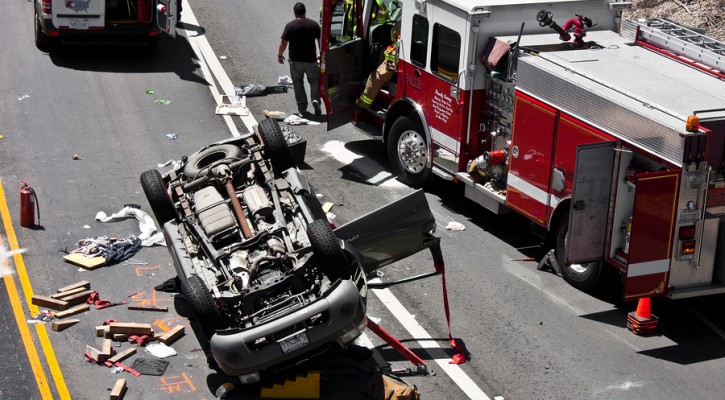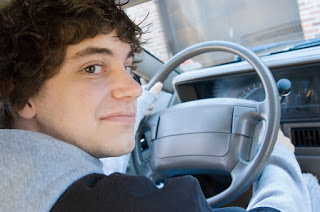Monthly Archives: December 2006
Nearly Half of All Teen Driving Fatalities Caused by Speeding
December 29, 2006
Have you sped while driving? Sure, who hasn’t, right? Well according to statistics, if you’re a teen driver, you are putting yourself at a high risk for a car accident. And if you’re a parent of a new driver, you should know how your teen defines speeding. One study in California showed that most teenage drivers defined speeding as driving in the area of 90 mph or more. Driving 65 in a 55 zone was not considered speeding by them. That’s a scary thought.
What’s worse is that teenagers do not realize the consequences of speeding. A 2005 study by the Allstate Foundation found that about half of all teenage fatalities resulting from car crashes were caused by speeding. However, all over the nation, teens are being pulled over for excessively speeding for reasons that they believe are important, but they are instead putting lives at risk, including their own.
Recently, an online newspaper reported that a 16-year-old boy was pulled over for driving 142 mph at about 12:40 a.m. Officers believe this is the fastest speed ever recorded on their roads, as most cars don’t even go that fast. The teen’s excuse for speeding? He was late getting home, past his curfew, and afraid his parents would get angry. In the same community a few months prior, a 17-year-old girl was pulled over for driving 101 in a 30 mph zone. Again, it was late night, and she was in a hurry to get home.
What are these drivers thinking? Obviously they don’t realize the true dangers of speeding. They feel invincible. Sadly, many teens who feel this way don’t make it home to their parents, not even late. Wouldn’t it be better to just make it home late, and alive, then not at all? Hopefully teens can realize that speeding is not the answer, and that perhaps open communication with their parents is a good start to driving safety. Next time you’re going to be out past your curfew, call your folks and let them know you’ll be late, and home safe.

Teens Are Not Immune to Death or Injury
December 20, 2006
In Mandeville, Louisiana, law enforcement and school officials alike are trying to spread the word about safe teenage driving. A forum on teen driving, titled “Teen Focus on Safe Driving: The Myth of the Invincible Teen,” was sponsored by the St. Tammany Parish School Board. The purpose of the forum was to show teens that they are not immune to being killed or seriously injured in a car crash, something that has unfortunately been proven lately by local teen drivers.
At the forum, teams gathered to learn from law enforcement officers, and medical and other driver education professionals. Presenters also showed a national award-winning video that warned teen drivers again of the risks they take every time they get behind the wheel. Not only are they putting themselves at risk when getting involved with poor choices and behavior, but they are putting others at risk as well.
Drinking and driving and not wearing seat belts were two of the most common risky behaviors addressed at the forum. An Associate Professor of Emergency Medicine at Louisiana State University, Dr. Todd Thoma, stated that almost 40 percent of auto fatalities are due to drinking and driving. And while new seatbelt laws have saved hundreds of thousands of lives, many more people still do not wear them.
The teams, which comprised of a school administrator, two school teachers or counselors, one parent and more than 10 students, gathered in groups after the presentations to brainstorm ideas on sharing what they learned to the rest of their classmates. Ideas such as staging mock accidents and how they could have been avoided by following the rules of the road and holding safe teen driving pep rallies were mentioned.
This forum showed teenagers that they need to be responsible when driving, and be aware of the safety issues and dangers involved. Teens can’t rely on parents and law enforcement officials alone to keep them safe – we need to remember that we are the ones behind the wheel, making the decisions. Hopefully this forum will have showed enough teens how to make the proper decisions, ones that just may save their lives.
You Snooze, You Can Lose…Your Life
December 15, 2006
Did you know that if you are driving at 60mph, and you close your eyes for one second, your car would have traveled almost 90 feet? Yep, it’s a scary fact, and evidence that driving while tired is just as dangerous as drinking and driving. Thankfully, there is a website I just discovered that can help keep teens save while driving at night or in the early mornings, or anytime drowsiness is a problem.
If you visit www.thenonap.com, you’ll see they’re selling a gadget called No Nap. This is a little device fits behind your ear and senses when you become drowsy. To keep you from dosing off, it sounds an alarm to help keep you alert and awake.
No Nap will set you back $20, but that is well worth it, considering it can save your life. It’s even offered in three colors: grey, red, and yellow – so you can pick the color best suited to your personality.
As teenagers, we can use all the help we can get staying safe on the road. Fatal car accidents are the number one killer of teenagers, and falling asleep at the wheel is a big cause of car accidents. If your car can travel 90 feet in one second while going 60mph, think of what can happen if you nod off for only a few seconds. If you think you’ll wake up if your car drifts off the road, or if you’ll have time to react when you “come to,” think again. Products like the “No Nap” can help save your life.

Study Says Teen Drivers in Arizona are Dangerous
December 15, 2006
A recent study by Arizona State University showed that, once again, fatal car accidents are the number one killer of Arizona children in 2005. During that year, 1,148 children under age 18 were killed. The study concluded that teen drivers accounted for much of the loss, which is a shame. Nationwide, car crashes are the top killer of teenagers, so this study is yet more proof that intervention and driver education is needed to help save teen lives.
This study was done by the Center for Health Information and Research at ASU, and about 250 people from the Arizona Child Fatality Review Teams reviewed statistics to come up with the study numbers. More shocking than the number of children killed is the fact that many of these deaths were preventable. The study also revealed that one third of the children, or 388, died under circumstances that were preventable.
ASU research center medical director Dr. Mary Rimsza states, “Parents need to supervise their kids and make sure they are using their restraints, driving safely and making sure they have enough driving experience.” Recommendations for parents include: setting consequences for teens (and enforcing them), showing support for the strengthening of graduated-licensing laws, and making sure their children are safe behind the wheel before allowing them to drive without an adult present.
With many teens involved in drug and alcohol abuse, reckless driving, and failing to wear seat belts, fatal car accidents are only going to continue. By being aware of the statistics, and taking action, parents can help save their child’s life and perhaps the lives of others as well. According to the numbers offered up by the ASU study, the lives of up to 400 children each year can be saved by taking preventative measures when it comes to letting your teens drive.

Parents Really Can Influence Their Teen’s Driving Behavior
December 11, 2006
Did you know one if five tens drink and drive, or that one in eight admit to smoking pot and driving? Considering that auto accidents are the number one cause of teenage death, it really shouldn’t come as a surprise that teens are indeed engaging in risky behavior while driving, but the actual numbers shocking.
These are two small statistics released by a recent study by Liberty Mutual and SADD, or Students Against Destructive Decisions. The seventh annual Teens Today study shows that while teens are engaging in behavior that leaves them at risk for fatal accidents, parents have the ability to greatly reduce the occurrence of these behaviors in their teens.
According to the study, teens report that they are less likely to drive under the influence of drugs or alcohol if they have parents who set driving expectations and give clear consequences for breaking those rules that are set. Liberty Mutual president, Paul Condrin, points out that “… parents need to know the laws and teen-driving rules of their state, set clear expectations with their teens… and establish and enforce those consequences should those laws be broken or expectations not met.”
It’s good news that the role of parents in their teen’s life, and driving activities, play a large role in whether they make destructive choices that may endanger their lives and the lives of others. Reducing fatal car accidents among teenagers – the number one cause of teenage death – is the primary goal of reducing risky behavior such as drinking and driving, talking on the phone or eating while driving, and having multiple passengers that can be distracting to the driver.
What can a parent do? Some tips offered by Liberty Mutual and SADD include knowing the laws in your state; educating your teen about driving, preferably before they reach the legal driving age; continue monitoring your teen after their receive their license; and set clear rules and enforce them. Teens whose parents establish clear consequences are shown to be less likely to speed, drive with three or more passengers in a car, or talk on a cell phone while driving.
The chairman and CEO of SADD, Stephen Wallace, said it best: “Perhaps most important is to set a good example for young drivers and to reinforce their good driving habits by praising what they are doing right behind the wheel.”
